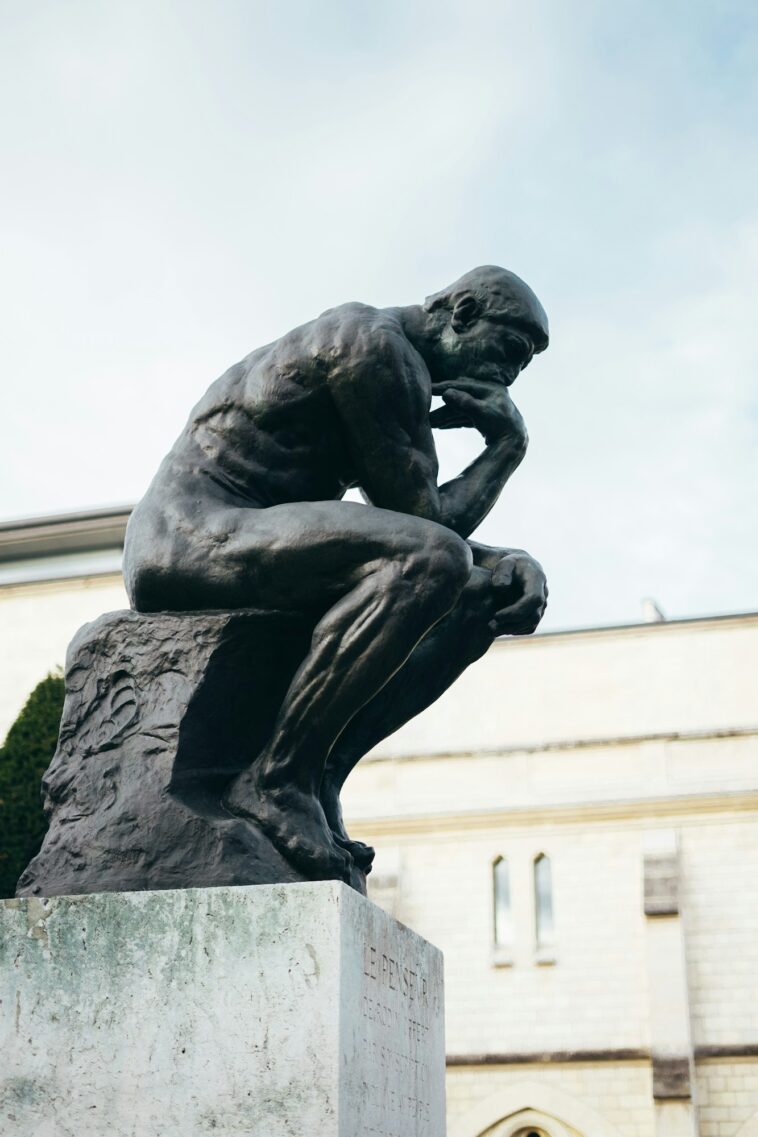Auguste Rodin: The Pioneer of Modern Sculpture
Key Takeaways
- Auguste Rodin revolutionized sculpture, emphasizing individual character and physicality.
- His most famous works include “The Thinker,” “The Kiss,” and “The Burghers of Calais.”
- Rodin faced controversy and rejection, yet his innovative style gained widespread acclaim.
- His techniques and subject matter significantly influenced modern sculpture.
Early Life and Artistic Beginnings
Born in Paris in 1840, Rodin’s early artistic pursuits were marked by traditional schooling and a craftsman-like approach. Despite facing repeated rejection from the École des Beaux-Arts, Rodin persevered, developing a unique style characterized by naturalistic and detailed modeling of the human form. His initial foray into professional art was predominantly in decorative arts, where he honed his craft.
Breakthrough and Innovations
Rodin’s first major breakthrough came with “The Age of Bronze,” a piece so lifelike it sparked accusations of casting from a living model. This controversy, however, underscored the naturalism that would become a hallmark of Rodin’s style. Unlike his contemporaries, he eschewed traditional themes of mythology and allegory, focusing instead on conveying the raw emotion and physicality of the human body.
Key Works and Contributions
Among his celebrated works, “The Thinker,” “The Kiss,” and “The Burghers of Calais” stand out, each showcasing Rodin’s ability to capture deep emotional and psychological complexities. His “Gates of Hell,” although never completed, contained figures that would emerge as independent sculptures, further testament to Rodin’s innovative approach to form and composition.
Personal Life and Relationships
Rodin’s personal life was as tumultuous as his professional one. His long-term companion, Rose Beuret, and his relationships with students like Camille Claudel, influenced both his life and art. These relationships, fraught with passion and conflict, mirrored the intensity of his sculptural creations.
Later Years and Legacy
Despite facing criticism and controversy throughout his career, Rodin’s fame grew, and he became a celebrated figure in the art world. His approach to sculpture laid the groundwork for modern sculpture, moving away from traditional techniques and subjects. Rodin’s influence extends beyond his lifetime, with his works and artistic philosophy continuing to inspire and provoke.
Rodin’s Technique and Method
Rodin’s methodology broke from traditional sculptural techniques. He worked directly with clay, capturing movement and emotion, and then had his works cast in bronze or carved in marble. This hands-on approach allowed for a more direct and expressive translation of his artistic vision.
Impact and Influence in Art
Rodin’s influence on modern sculpture cannot be overstated. His emphasis on depicting the human form with realism and emotional depth transformed the medium. His pupils and contemporaries absorbed and propagated his innovative techniques and approaches, cementing his status as a pioneer of modern sculpture.
Conclusion
Auguste Rodin, through his groundbreaking techniques and emotional depth, redefined the boundaries of sculpture. His legacy as the father of modern sculpture is a testament to his unique vision, one that continues to resonate in the art world and beyond.





